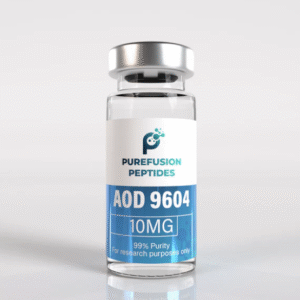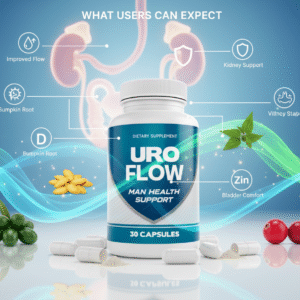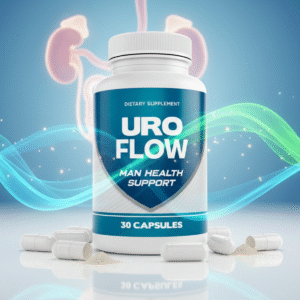When it comes to saving lives during sudden cardiac arrest (SCA), an Automated External Defibrillator (AED) is an essential piece of equipment. However, the cost of brand-new AEDs can be a challenge for schools, gyms, small businesses, and community centers. That’s where refurbished AEDs come in — offering the same life-saving technology at a fraction of the price.
In this comprehensive Refurbished AED Buyer’s Guide, we’ll cover everything you need to know before purchasing — from how refurbishment works to what certifications and features to look for.
What Is a Refurbished AED?
A refurbished AED is a pre-owned defibrillator that has been carefully inspected, tested, repaired (if necessary), and restored to meet manufacturer standards. It’s not the same as a “used” AED that’s sold as-is. Refurbished devices are reconditioned by certified technicians, ensuring they work like new while offering substantial savings.
The refurbishment process typically includes:
- Comprehensive internal and external inspection
- Replacement of worn or expired parts (pads, batteries, electrodes)
- Functional testing using manufacturer-approved simulators
- Cosmetic restoration to near-new condition
- Final quality assurance testing
In most cases, refurbished AEDs are backed by warranties ranging from 1 to 5 years, giving buyers peace of mind and confidence in their investment.
Why Choose a Refurbished AED?
Purchasing a refurbished AED provides both financial and practical advantages. Here’s why thousands of organizations are choosing this cost-effective solution:
1. Significant Cost Savings
Brand-new AEDs can cost anywhere from $1,200 to $2,500 or more. A high-quality refurbished AED often sells for 40–60% less, making it ideal for businesses or facilities with multiple units to install.
2. Reliable Performance
When refurbished by certified professionals, AEDs undergo rigorous testing to ensure full operational reliability. Many refurbished units perform just as well as their brand-new counterparts in emergencies.
3. Full Compliance and Certification
Reputable refurbishers follow FDA and manufacturer guidelines, ensuring each device meets medical safety standards. Buyers also receive documentation proving the AED’s certification and readiness for use.
4. Sustainability and Waste Reduction
Choosing refurbished AEDs is an eco-friendly decision. It reduces electronic waste, conserves materials, and extends the life of perfectly usable medical equipment.
5. Warranty Protection
Many refurbished AEDs come with warranties that rival new models, covering parts, labor, and even replacement accessories if necessary.
Where to Buy Refurbished AEDs
Not all sellers are equal. To ensure safety and quality, it’s important to buy from authorized, reputable suppliers who specialize in AED refurbishment and certification.
When selecting a vendor, look for:
FDA-certified refurbishers or authorized AED service centers
- Positive reviews and customer testimonials
- Transparent warranty and return policies
- Availability of replacement parts and accessories
- Documentation of testing and certification for each device
Avoid buying used AEDs from online marketplaces or unknown sellers, as these units may not be properly tested or safe for medical use.
Top Refurbished AED Brands
Several trusted AED brands are commonly available in refurbished condition. Each offers reliability, ease of use, and proven life-saving technology.
1. Philips HeartStart OnSite AED
Known for its user-friendly design and clear voice prompts, this AED is a popular choice for schools, offices, and homes. Refurbished units often include new pads and long-lasting batteries.
2. ZOLL AED Plus
The ZOLL AED Plus provides real-time CPR feedback and durable construction. A refurbished model offers the same advanced technology at a lower cost.
3. Physio-Control LIFEPAK CR Plus
This AED is designed for both professional and public use, with quick shock delivery and easy operation. Refurbished units are fully restored and certified for reliable performance.
4. Cardiac Science Powerheart G3
Powerheart G3 AEDs feature self-testing technology and intuitive operation. Refurbished models are an affordable way to access one of the most trusted AEDs in the market.
Key Features to Check Before Buying a Refurbished AED
Before finalizing your purchase, ensure the AED meets specific safety, functionality, and usability requirements. Here’s what to look for:
1. Certification and Testing Reports
Always verify that the AED has been tested and certified by qualified technicians. Request documentation confirming that it meets manufacturer and FDA standards.
2. Battery Life and Pad Expiration
AED batteries and electrode pads expire over time. Ensure these components are brand new or have at least a few years of life remaining.
3. Software Updates
Some AEDs require periodic software updates to stay compliant with the latest resuscitation guidelines (e.g., AHA updates). Confirm that your refurbished device has the most current software version.
4. Warranty Coverage
A solid warranty (1–5 years) demonstrates the refurbisher confidence in their product. It also provides you with protection in case of equipment failure.
5. Accessories and Compatibility
Ensure the AED includes all necessary accessories:
- Carrying case
- Rescue kit (scissors, gloves, mask, razor)
- User manual
- Pads and batteries
How to Maintain Your Refurbished AED
Proper maintenance ensures your AED stays ready to save lives at any time. Here are a few essential maintenance tips:
1. Perform Regular Checks
Most AEDs have self-test indicators. Check the status light regularly — a green light typically means it’s ready for use, while a red or flashing light indicates service is needed.
2. Replace Expired Components
Track expiration dates for pads and batteries. Replace them promptly to maintain functionality.
3. Store in an Accessible Location
Mount your AED in a visible, easy-to-access spot using a wall cabinet or bracket. Keep it away from moisture, dust, and extreme temperatures.
4. Train Your Staff or Team
Even though AEDs are designed for untrained users, having CPR and AED-certified staff improves response time and outcomes during emergencies.
5. Register and Track Your Device
If required in your region, register your AED with local emergency services or health authorities. This ensures faster response coordination during cardiac events.
Common Misconceptions About Refurbished AEDs
There are several myths surrounding refurbished AEDs that often prevent people from considering them. Let’s clear them up:
Myth 1: Refurbished AEDs are unsafe.
Truth: Certified refurbishers follow strict medical equipment reconditioning standards, ensuring equal safety to new models.
Myth 2: Refurbished AEDs don’t last long.
Truth: With proper maintenance and timely replacement of pads and batteries, refurbished AEDs can perform reliably for years.
Myth 3: They don’t include warranties.
Truth: Most reputable sellers offer warranties and service plans, often similar to new AED coverage.
Who Should Buy Refurbished AEDs?
Refurbished AEDs are an excellent choice for:
Schools and universities with tight safety budgets
Small businesses and offices that need compliance without overspending
Gyms and fitness centers that require multiple AED units
Community centers and churches aiming to improve public safety
Emergency responders who need backup or training units
Whether you’re equipping a single facility or a large organization, refurbished AEDs deliver dependable life-saving technology that’s both affordable and compliant.
Conclusion
A refurbished AED offers a perfect balance of affordability, reliability, and safety. When purchased from a trusted source, it can provide the same life-saving capabilities as a new device — at a fraction of the cost.
Before buying, ensure your chosen AED has been properly refurbished, tested, and certified. Pay attention to warranty terms, component freshness, and software updates.
Investing in a refurbished AED is not just a smart financial decision — it’s a commitment to safety, preparedness, and saving lives.
read more. https://repurtech.com/



